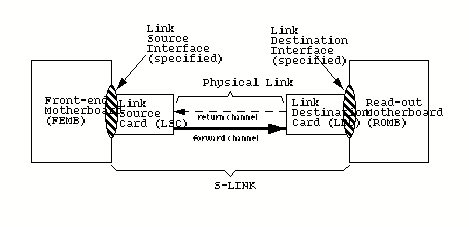
1.0 Scope
In many applications a uni-directional data channel will be required. In other cases the user might require to send flow control and other information back to the FEMB. The S-LINK, therefore, can be constructed in either a simplex or a duplex version.
In the simplex version, there is no communication path between the LDC and the LSC. That is, data can be sent in one direction only (the forward channel) and data which is transferred to the LSC will be transmitted to the LDC and transferred to the ROMB. An S-LINK of this type could be implemented over a single fibre and is targeted at applications where the number of read-out channels is very large (perhaps several thousand). The immediate consequence of this is that no flow control is possible and every word transferred to the LSC will subsequently be transferred out by the LDC. The user should therefore ensure that the ROMB can always handle the data stream coming from the S-LINK.
In the duplex version, a return channel exists which allows the LDC to pass information back to the LSC. The main function of this return channel is to transmit flow control commands from the ROMB to the FEMB. Thus a duplex S-LINK transmits only when the ROMB is available to read the data. When the ROMB is unavailable, data transfers from the FEMB to the S-LINK are inhibited. In addition, the return channel may be used to transmit signals on a set of return lines.